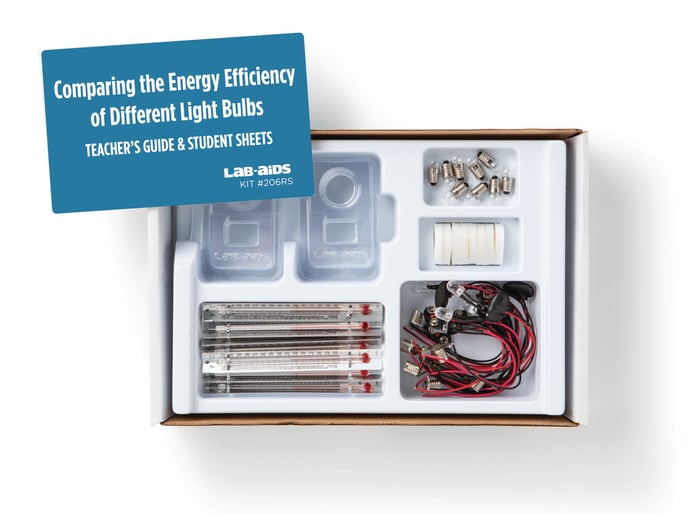Comparing the Energy Efficiency of Different Light Bulbs

Students investigate the efficiency of light bulbs to produce light. This activity provides students with experiences related to experimental design and three important energy concepts: energy transformations, the conservation of energy, and energy “loss” to the environment. Students use calorimetry to measure how much “waste” heat energy a glowing bulb produces in a set time and then calculate the electrical energy consumed by the bulb. This data, combined with an understanding of conservation of energy allows them to calculate the efficiency of the bulb to produce light. They then investigate advantages and disadvantages of incandescent and fluorescent bulbs.
Details at a Glance
- 1-2 Days | 1-2 ~50 minute class periods
- 1 Activity
- Accommodates unlimited classes, each with 8 groups of 4 students
- Meets our criteria for supporting literacy
- All materials are non-consumable
- Developed in partnership with SEPUP
- Requires a water source
Scientific Concepts
Performance Expectation
•MS-PS3-4
•MS-PS3-5
Disciplinary Core Ideas
•MS-PS3.A Definitions of Energy
•MS-PS3.B Conservation of Energy
Science and Engineering Practices
•Analyzing and Interpreting Data
•Planning and Carrying Out Investigations
Crosscutting Concepts
•Energy and Matter
•Connections to Nature of Science
KEY VOCABULARY: energy efficiency, energy transfer, energy transformation, law of conservation of energy, light energy, temperature, thermal energy (heat)
Guides & Student Sheets
Our kits and modules provide you with everything you need so you can open, review, and teach the material confidently the next day.
- Comprehensive Teacher Guide with background information, detailed instruction, example data and answers
- Student Sheets with age appropriate background information, full procedure(s), and analysis items
- Materials necessary for the investigation (beyond common classroom items)
- Safety Data Sheets
Kit Components
- 8 9-volt battery harnesses with an LED and socket
- 8 bulb socket and thermometer holders
- 8 hot bulb trays
- 8 flashlight bulbs
- 8 metal-backed thermometers
- 32 Student Worksheet and Guides
- 1 Teacher’s Guide
- Not included and needed for instruction: Eight new or reasonably fresh 9-volt batteries, eight timers, and eight graduated cylinders with a minimum of 1 mL resolution, supply of room-temperature water.
